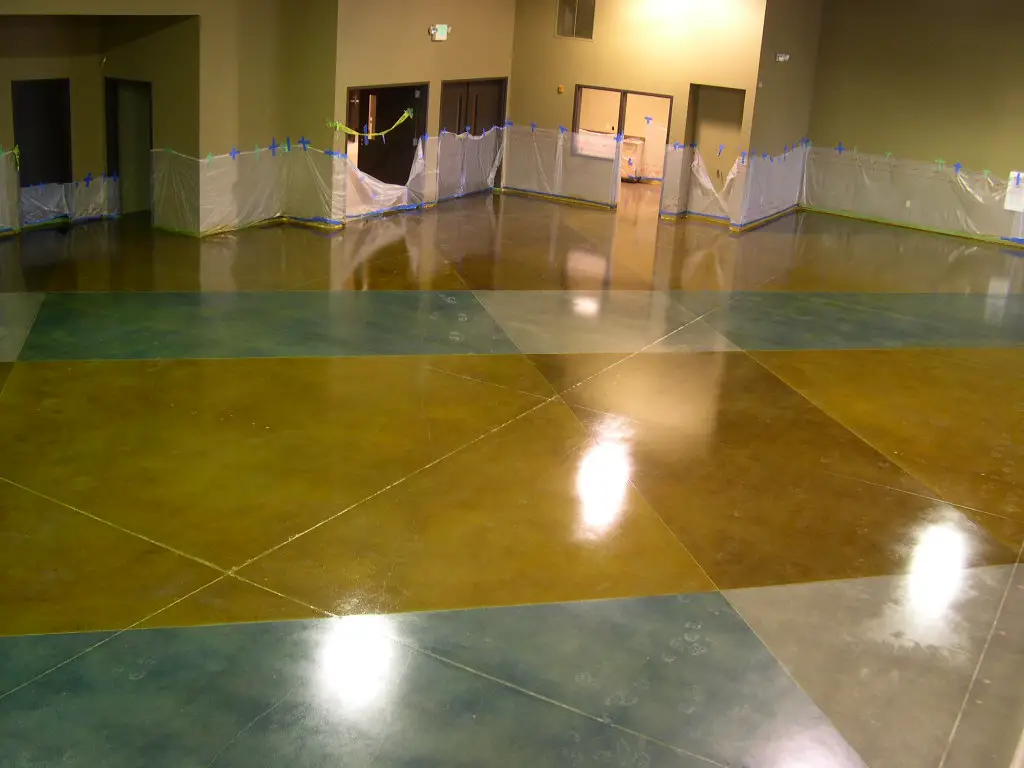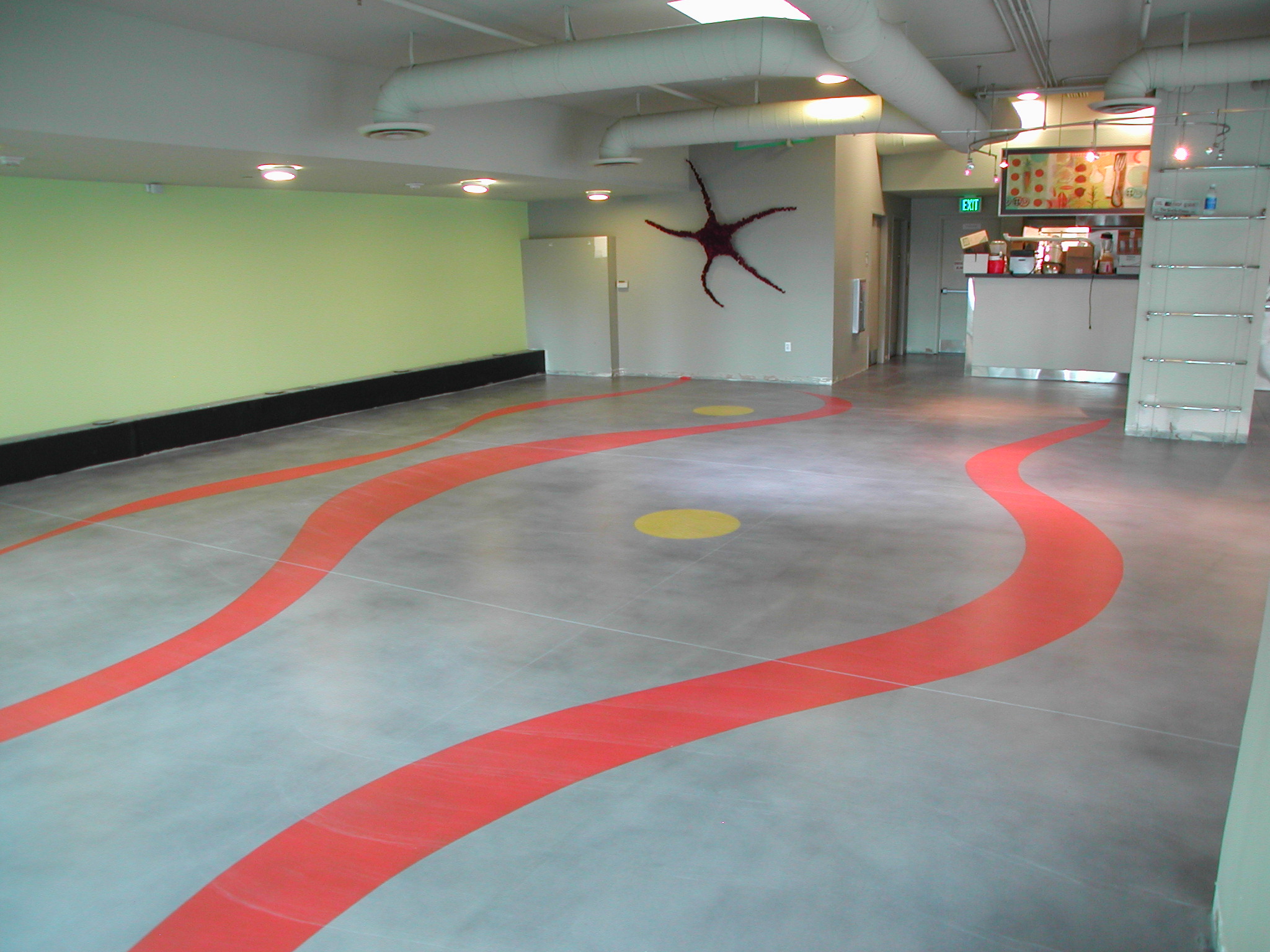
When finishing a great concrete project it all comes down to the concrete sealer or concrete coating you decide to put on as the finish. After having used the same sealer on multiple projects you develop a comfort level and understanding of how it reacts to the concrete.
Someday however there will come a time when your customer requests a sealer that is outside of your comfort zone or perhaps require you to use a specific product for VOC reasons or based on their specifications.
Understanding how concrete sealers and coatings work and dealing with a quality system is of paramount importance to guarantee the successful outcome of the project.
Here are some typical sealers and coatings and their characteristics.
- Solvent based acrylics:
- Water based acrylics
- Water based epoxy
- High Solids Epoxies
- Polyurethanes
- Polyurea
- Densifiers (penetrating sealers)
First off let’s explain quickly the difference between a sealer and a coating. To make it easier to understand we will consider any sealer a product that penetrates the surface to seal it whereas a coating is any product that remains on top of the surface creating layer or visual barrier. Keeping in mind enough coats of a sealer will eventually become a coating.
Solvent based acrylics: By far the most popular and most widely used sealers on the market. Because of their ease of use, forgiving characteristics and color enhancing properties these sealers can be found on driveways, to casino floors to, pool surrounds and even concrete countertops. Solvent based acrylics are simply an acrylic emulsion (plastic) dissolved in a solvent often times xylene, acetone or MEK or combination. Once applied the solvent dissipates leaving behind an acrylic sheet or coating that is designed to protect the surface from wear staining as well as enhance the colors in the surface.
Solvent based acrylics are available in varying concentrations eg: 30% solids, 15% solids or 10% solids. The solids are the amount of acrylic versus the amount of solvent which will eventually dissipate or evaporate, leaving behind the percentage of solids on the sealed surface.
How to apply a solvent based acrylic: Solvent based acrylics are fairly easy to apply. Often times a lower viscosity or lower % solids is applied as a first coat. This will create less of a coating effect and more of a sealer which will help the material penetrate the concrete getting better adhesion while sealing off the surface helping to prevent air bubbles and pin holes. This will set the standard for subsequent top coats with a higher solids acrylic to give some build and as well as a protective coating effect.
Solvent based acrylics are often rolled with lint free roller , or sprayed with a hand pump sprayer or paint sprayer. It is important to remember these products are highly volatile and all pilot lights and ignition sources are out.
Maintenance of a solvent based sealer: Maintaining the look of a surface with a solvent based acrylic finish, could include additional maintenance coats of the same material, assuming the product will adhere correctly or in the case of an interior finish may involve a wax or floor finish maintenance program.

Water based acrylics: When the options for a sealer require low odor, low VOC’s, a natural appearance and environmentally friendly attributes, a water based acrylic may be the answer. Based with water rather than a solvent you can imagine the handling of these materials are a lot easier as well as the safety aspect is greatly increased. Water based acrylics are often white or bluish in color when applied but eventually dry clear. They are a great alternative in an indoor setting where solvents can not be tolerated. Sometimes reserved for residential use because of their low build properties these products are more than adequate for regular use in an average traffic setting. Applied with rollers, sprayer or even lambs wool applicators these systems can leave a natural finish which is sometimes hard to accomplish with high build ‘plastic looking coatings’ In the event these products are used in a commercial setting regular maintenance will protect the finish an yield great results for years to come.

Water Based Epoxy: Professional quality water based epoxies comes in multi component kits. This means the product must be blended or combined prior to application. Coming is different mix ratios: including 1:1 2:1 4:1 etc. these epoxies are measured with a part A and part B component and blended creating not only a drying but a curing effect. Sealers or coatings that cure because of a chemical reaction are most often more durable, thicker, more abrasion resistant and like epoxies, known for their excellent adhesion properties. Some water based epoxies can also be applied to damp surfaces creating a cure and seal effect and finish. Although water based epoxies make for a great finish it is not uncommon to use these products as a primer or first coat to subsequent top coats which could include another epoxy or a polyurethane.
High solids epoxies: High solids epoxies are generally associated with coatings. They are mainly designed to coat and add a layer of protection to a surface. These coatings are generally referred similar to Solvent Acrylics in “Percentages”. From 80% solids to 100% solids. Epoxies will leave a very high percentage of the “plastic” behind after they are cured, where as a 100% solids epoxy will be the exact same thickness dry as it was wet due to the fact there is no evaporation of any solvents.
High Solids Epoxies are used as coatings and create a chemical resistant barrier between the concrete surface and the elements. Because epoxies can be applied thick, you will find these systems used in industrial applications, as well as a filler material in Quartz floors, color flake garages and epoxy stone systems. Generally the thicker the epoxy the more impact resistant and durable it is. Some also say the higher the gloss of the epoxy the harder and better quality it is.
Polyurethanes: These products are often multi component systems and are ideal for high traffic and heavy wear. Urethane in contrast to epoxies are know for their excellent abrasion resistance and flexibility. Where as epoxies are know for their adhesion. An ideal commercial quality system may be composed of an epoxy primer bond coat with a polyurethane top coat giving the end user the best of both worlds.
Polyurethanes are available in both water based and solvent based compositions as are many of the sealer mentioned above. Even as technology advances and water based material and composition get better generally a sealer or coating is always a bit more durable and forgiving with a solvent base vs a water base.

Polyurea: Designed for quick turnaround applications and industrial use, polyurea’s are coming of age in the mainstream market due to their quick drying properties and advanced coating characteristics. Almost a blend of all the best properties of an epoxy and polyurethane a polyurea has excellent adhesion characteristics while maintaining its flexibility, UV stability and chemical resistance. It is becoming the new improved garage coating system of choice for home and industry for those who want the very best and want it fast!
Densifiers, hardeners and penetrating sealers: If a natural concrete finish with no surface coating is desired a densifier, may be the solution. Often reserved for natural concrete vs polymer modified toppings and resurfacing systems, Penetrating sealers are designed to absorb into the pores of the concrete and seal of the microscopic paths that a liquid could find and ultimately stain the surface. Often time densifiers are used during the polishing process as a way of hardening the surface of the concrete and making it easier to polish while creating a more functional sealed surface. Many densifiers will not prevent staining but will lessen and reduce the possibility of it occurring. Spills and liquids should be removed quickly to keep them from staining a densified or hardened surface.
Often time a hardener or densifyer is applied by saturating a concrete surface and scrubbing in the material attempting to get maximum penetration. Once the excess material has been removed the penetrated material dries and creates a crystalline like growth within the concrete’s pores thereby closing them off and sealing and hardening the surface.
